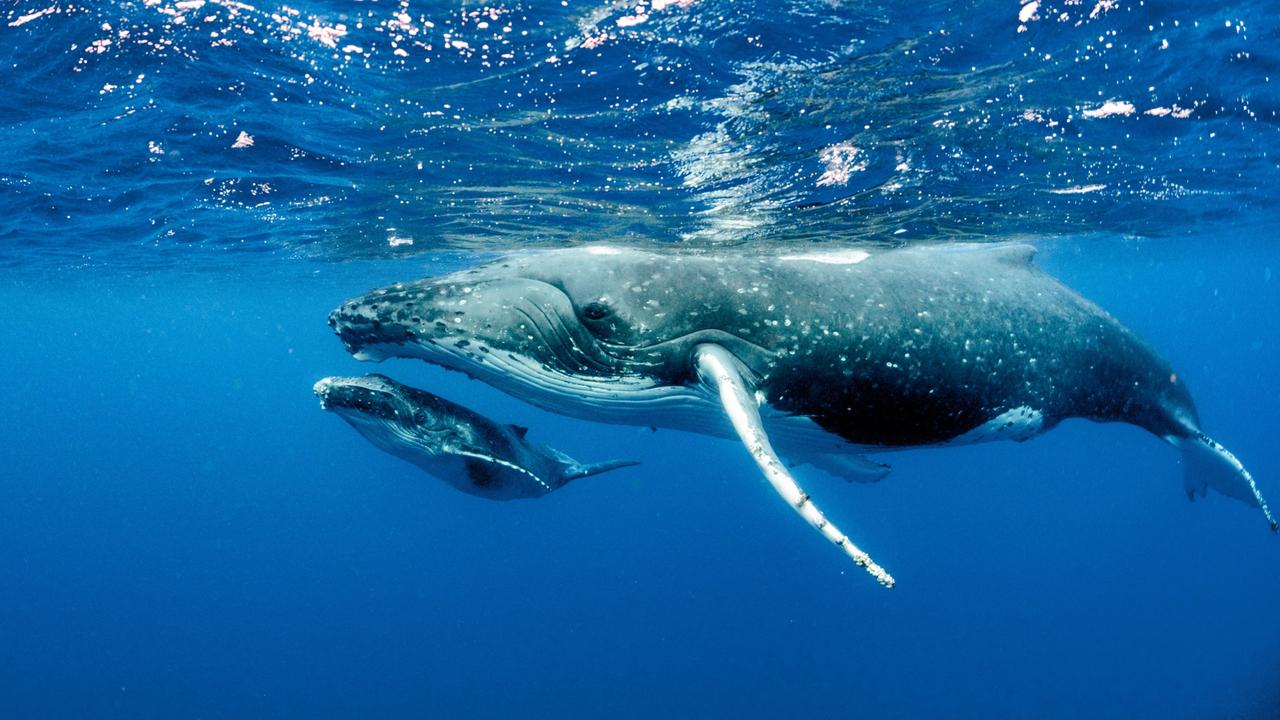Groundbreaking study shows how baleen whales sing underwater
Ever wondered how whales are able to sing underwater without choking? After examining the voice boxes of three baleen whales, a team of scientists believe they now have the answer

READING LEVEL: GREEN
Important clues into how whales are able to sing underwater have been found in a new study.
Professor Coen Elemans and other researchers at the University of Southern Denmark studied the larynges, or voice boxes, of three whales that had previously been stranded and died.
The whales were a humpback, a minke and a sei – three different types of baleen whales.
Baleen whales are different to other mammals like humans because they don’t have vocal chords or teeth. Instead, they have a U-shaped tissue in their voice box that allows them to breathe in huge amounts of air. They also have a unique cushion of fat and muscle that isn’t found in other animals.
By blowing air through the voice boxes in the lab, the scientists were able to find out which parts of the voice box vibrated in order to produce sound. The researchers also created computer models of the sei whale’s songs and matched them to recordings of similar whales taken in the wild.
They concluded that baleen whales were able to sing by pushing the tissue against the fat and muscle cushion.

The findings were different to other studies that showed toothed whales, such as dolphins, orcas and sperm whales, sing by using a special organ in their nasal passages.
Humans, on the other hand, make sounds by vibrating their vocal chords, which are little strips of vibrating tissue that stretch across the airway, supported by small cartilage structures, called arytenoids, that rotate to open or close the larynx.
In baleen whales, arytenoids are large and stiff, forming a kind of ring that can press against the cushion of fat and muscle. When a whale breathes out, this cushion vibrates in a rippling way, which makes the sound of a whale call.

Whales are thought to have evolved from land mammals about 50 million years ago.
Prof Elemans said the larynges of baleen whales had probably evolved as a way to let them sing underwater without the risk of choking and drowning.
The adaptation would have been very important to the survival of whales, who depend on vocalising, or singing, to communicate with each other.
The study showed that while whales are able to make a wide range of different sounds at different pitches – some of which humans can barely hear – they can’t produce sounds louder than the ones made by ships.
Since whales can’t sing loud enough to drown out noise pollution from ships, they may not be able to hear each other properly, which means some species, like the Antarctic blue whale, could be finding it hard to mate. Being unable to find a mate would in turn threaten future population numbers.
POLL
GLOSSARY
- larynges: a hollow organ responsible for making sounds, also called a voice box
- baleen whales: whales that have baleen rather than teeth
- baleen: long bristles made from keratin that whales use to sieve plankton and small shrimp from the sea water to eat
- nasal passages: passages behind the nose
- arytenoids: cartilage that moves the vocal chords in humans
EXTRA READING
Great whites’ mystery deep dives
Swimming cassowary stuns at beach
The funniest animal photos from around the world
QUICK QUIZ
1. How are baleen whales different to other whales?
2. What three types of baleen whales were studied in the research?
3. How did the scientists figure out the way whales sing?
4. How long ago did whales evolve from land mammals?
5. In what way is noise pollution from ships threatening the future of whales?
LISTEN TO THIS STORY
CLASSROOM ACTIVITIES
1. What are they saying?
What do you think whales are telling each other when they sing? Write a conversation, or the words to a song that is sung, between two baleen whales on a typical day in the ocean.
Time: allow at least 20 minutes to complete this activity
Curriculum Links: English, Critical and Creative Thinking
2. Extension
Can you think of ways to create quieter ships? Think of all the things that would make large ships too noisy for whales to hear each other. Create a design for a ship that solves these noisy problems!
Time: allow at least 45 minutes to complete this activity
Curriculum Links: English, Design and Technologies
VCOP ACTIVITY
BAB it!
Show you have read and understood the article by writing three sentences using the connectives “because’’, “and”, and “but” (BAB). Your sentences can share different facts or opinions, or the same ones but written about in different ways.

